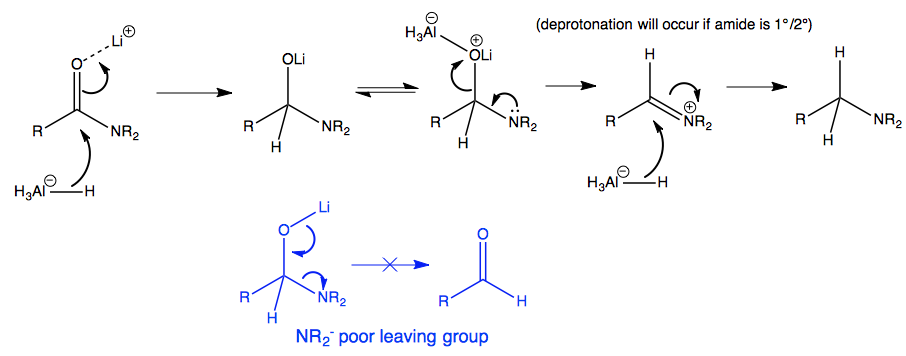You've got it correct in your comment with the $\ce{N}$ lone pair assisting. The reason why the $\ce{N}$ lone pair kicks oxygen out, and not the other way round, is because oxygen-based groups are better leaving groups than nitrogen-based ones under the reaction conditions. (Just as a rough guide, you could compare $\mathrm{p}K_\mathrm{a}(\ce{H2O}) = 15.7$ and $\mathrm{p}K_\mathrm{a}(\ce{NH3}) = 38$.)

(Don't worry about how I've drawn the metals coordinating to oxygen - the exact details aren't important and sometimes aren't even fully understood.)
In the aldehyde reduction, there is no lone pair to assist in the expulsion of oxygen. So the intermediate alkoxide just sits there, until you add water or acid:

The aqueous workup serves two purposes: firstly to reprotonate the product (for example, with the aldehyde reduction, your final product is an alkoxide ion and adding water gets you the alcohol), and secondly to destroy any unreacted $\ce{LiAlH4}$. In fact, the aqueous workup is also carried out in the reduction of the ketone or aldehyde - we often just omit it because it's so common and it's tiresome to have to write it on every reaction we do. So even though it's not there, it's still implied.
If you wanted to reduce the carbonyl group of a ketone/aldehyde to a methylene group, the three most well-known methods available are the Wolff-Kishner reaction, the Clemmensen reduction, and the Mozingo reduction.



